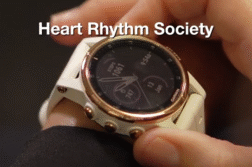PHILADELPHIA, Pa. (Ivanhoe Newswire) — When a patient has a heart attack, doctors are working against the clock. Often their heart is too weak to pump enough blood. Cardiologists in major U.S. medical centers are taking part in the National Cardiogenic Shock Initiative. That study is evaluating the best way to use a tiny pump as wide as a straw, to keep patients alive. Impella
Heart attack patients are at the greatest risk of losing their lives in the first critical minutes.
Brian O’Neill, MD, Associate Professor of Medicine from Temple University said, “If a patient is having a very severe heart attack, we’re tasked with having the patient in the cath lab and having the artery opened within 90 minutes.”
But what happens during those 90 minutes? Traditionally, it’s been a high dose IV of drugs to regulate blood flow and pressure.
Val Rakita, MD, Advanced Heart Failure Cardiology, said, “Ironically, these medicines are somewhat toxic to the body and to the heart, specifically. It’s akin to flogging a horse that you’re trying to ride and you’re trying to get that last ounce of strength out of it.”
That’s because the infusions are derivatives of adrenaline. But Temple University doctors are establishing protocol for a new device called the Impella pump.
Dr. Rakita explained, “This device lets the heart rest, as opposed to flogging it, allowing the best chance of recovery after the balloon and the stent are performed.”
The tiny Impella pump is temporarily inserted through the groin to stabilize blood flow, giving the interventional cardiologist time to deploy the permanent stent to keep the artery open.
“The catheter goes across the left ventricle like this and it sits and allows the blood to be sucked from the left ventricle and injected into the aorta, which is the largest chamber of the heart. This device will allow us to support those patients and keep them stable during the procedure because what can sometimes happen during the procedure to open a blocked artery, they can become very critically ill on the table and potentially suffer cardiac arrest,” said Dr. O’Neill.
Temple was one of 65 hospitals involved in studying the protocol, which took place over three years, primarily treating older males with heart disease. The Impella pump is FDA-approved and at least one doctor involved in the protocol predicts it could raise the survival rate in heart attack patients by 80 percent.
Contributors to this news report include: Cyndy McGrath, Supervising Producer; Donna Parker, Field Producer; Roque Correa, Videographer and Editor.
To receive a free weekly e-mail on Medical Breakthroughs from Ivanhoe, sign up at: http://www.ivanhoe.com/ftk
MEDICAL BREAKTHROUGHS
RESEARCH SUMMARY
TOPIC: HEART KEEPS PUMPING THANKS TO IMPELLA
REPORT: MB #4646
BACKGROUND: A heart attack, also called a myocardial infarction, occurs when a part of the heart muscle doesn’t receive enough blood flow. The more time that passes without treatment to restore blood flow, the greater the damage to the heart muscle. The five major symptoms of a heart attack are pain or discomfort in the jaw, neck, or back, feeling weak, light-headed, or faint, chest pain or discomfort, pain or discomfort in arms or shoulder, and shortness of breath. In some cases, a heart attack requires cardiopulmonary resuscitation (CPR) or electrical shock (defibrillation). Bystanders trained to use CPR or a defibrillator may be able to help until emergency medical personnel arrive. Remember, the chances of surviving a heart attack are greater the sooner emergency treatment begins.
(Source: https://www.cdc.gov/heartdisease/signs_symptoms.htm)
URGENCY: Brian O’Neill, MD, an Associate Professor of Medicine at Temple University talked about the urgency of getting treatment to heart attack patients, “When we encounter a patient that is sick like this, time is everything and we try to move as rapidly as we can. One of the things that has challenged us for a long time in cardiology is that not being able to help with the blood pressure, even when we fix the arteries on the patients, they can suffer a poor outcome because their heart really never recovers from the initial stunning. So we’re hoping that with this protocol, we can help prevent some of that stunning. If a patient is having a very severe heart attack, we are tasked with bringing the patient to the cath lab and having the artery open within 90 minutes. We really try to kind of use that in the back of our mind as a time period to really kind of make sure that they are having support during these sick times.”
(Source: Brian O’Neill, MD)
NEW TECHNOLOGY: Dr. O’Neill went on to explain how the Impella heart pump works, “By using ultrasound, we put a small catheter into the leg. This allows us to then assess the diameter of the vessel, to see if the femoral artery is big enough. That’s one of limitations of the protocol and of this method of treating patients is that the arteries have to be big enough to allow the pump to go in. If it looks like it’s big enough, what we’ll do then is we will put in a slightly bigger sheath. We use a catheter to place a small wire across the aortic valve into the left ventricle which is the main pumping chamber of the heart that then allows us to thread the pump over the catheter into the heart and then and then we turn the pump on.”
(Source: Brian O’Neill, MD)
FOR MORE INFORMATION ON THIS REPORT, PLEASE CONTACT:
Jennifer Reardon, Press Officer
267-990-9778
Jennifer.reardon@tuhs.temple.edu
If this story or any other Ivanhoe story has impacted your life or prompted you or someone you know to seek or change treatments, please let us know by contacting Marjorie Bekaert Thomas at mthomas@ivanhoe.com




